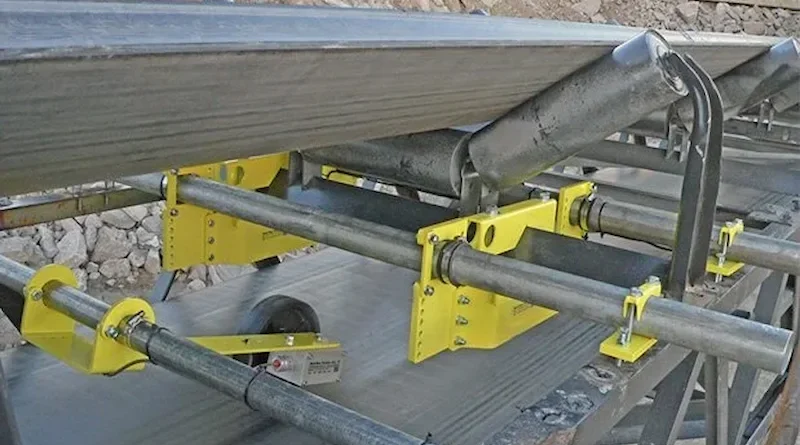What Are The Key Factors When Scaling Up An Existing Rotating Conveyor System?
When manufacturing operations need to increase production capacity, modifying existing conveyor systems is often a logical first step. But before making any changes, it’s crucial to understand the key factors to consider when scaling up a rotating conveyor system.
The key factors for scaling up a rotating conveyor system include motor capacity, structural integrity, bearing load ratings, drive component compatibility, and system balance requirements to maintain operational efficiency and safety.
While these factors might seem straightforward, there’s actually quite a bit more to consider depending on your specific application. The way these elements interact with each other can vary significantly based on your industry, materials being conveyed, and environmental conditions – so it’s worth diving deeper into each factor to ensure you’re making the right scaling decisions for your situation.
How Do Different Industries Affect Conveyor Scaling Requirements?
Different industries have unique demands that significantly impact how a rotating conveyor system should be scaled. In food processing, for instance, the need for frequent washdowns and sanitization means that any scaling must account for materials that can withstand harsh cleaning chemicals and moisture. The automotive industry, on the other hand, typically requires conveyor systems that can handle heavier loads and precise positioning for assembly line operations.
Mining and aggregate industries present their own set of challenges, with abrasive materials and dusty environments requiring more robust components and enhanced maintenance considerations when scaling up. In these cases, bearing selections and motor specifications need to be particularly hardy to withstand the demanding conditions.
What Role Does Environmental Control Play In Scaled-Up Conveyor Systems?
Temperature fluctuations, humidity levels, and exposure to various elements can significantly impact the performance of a scaled-up conveyor system. In cold storage facilities, for example, components need to be rated for low-temperature operation, and special lubricants may be required. Conversely, in high-temperature environments, thermal expansion of materials must be considered in the design calculations.
Dust and moisture control become even more critical as systems scale up, as larger systems typically have more points where these elements can intrude. Proper sealing and protection systems must be scaled proportionally to maintain system integrity.
How Should Maintenance Programs Be Adjusted For Scaled-Up Systems?
As conveyor systems grow in size and complexity, maintenance requirements change significantly. Preventive maintenance intervals often need to be shortened, and inspection points typically increase exponentially rather than linearly with system size. This is because larger systems have more potential failure points and higher stakes if something goes wrong.
Additionally, spare parts inventory management becomes more critical with scaled-up systems. The cost and storage requirements for replacement parts increase, and the importance of having critical components on hand becomes more significant due to the larger potential impact of system downtime.
What Are The Power And Energy Considerations For Scaled Conveyor Systems?
When scaling up a rotating conveyor system, power requirements don’t always increase linearly with size. Factors such as friction, load distribution, and system efficiency all play crucial roles in determining the actual power needs. It’s essential to conduct a thorough power analysis to ensure the electrical infrastructure can support the upgraded system without causing voltage drops or overloading circuits.
Energy efficiency becomes increasingly important as systems scale up, as operating costs can escalate quickly. Modern motor technologies, such as variable frequency drives (VFDs) and energy-efficient bearings, can help mitigate these costs. Additionally, power factor correction might become necessary to avoid utility penalties and optimize electrical system performance.
How Do Safety Requirements Change With Increased System Scale?
Scaling up a conveyor system often introduces new safety considerations that weren’t as critical in the smaller version. Emergency stop zones typically need to be reconfigured, and additional safety devices may need to be installed at new access points. The increased size and power of the system also mean that potential hazards become more severe, requiring more robust guarding and safety protocols.
Personnel training requirements usually expand with system scale, as operators need to understand the new safety features and emergency procedures. Access points for maintenance might need to be redesigned to ensure safe working conditions, and lockout/tagout procedures often become more complex with larger systems. It’s also common to need additional safety monitoring systems, such as belt misalignment sensors and emergency pull cords, as the system grows in size and complexity.
Conclusion
Before proceeding with any scaling modifications to your rotating conveyor system, schedule a comprehensive system audit with a qualified conveyor engineer who can evaluate all the factors we’ve discussed. This professional assessment will help identify potential bottlenecks, safety concerns, and infrastructure requirements specific to your application, saving you from costly mistakes down the line. Having this expert evaluation will also provide you with a detailed roadmap for implementing the necessary changes while minimizing disruption to your operations.
Visit the rest of the site for more interesting and useful articles.

